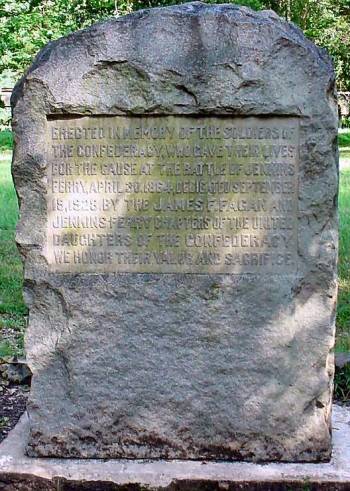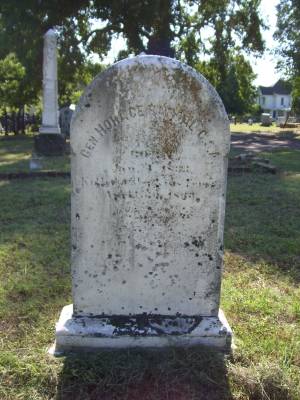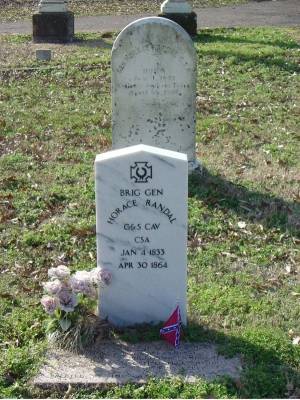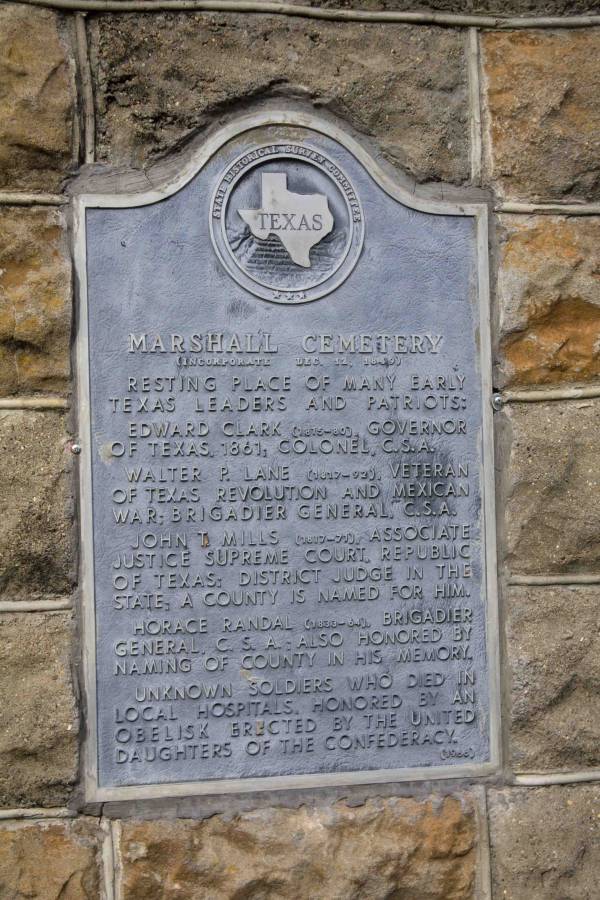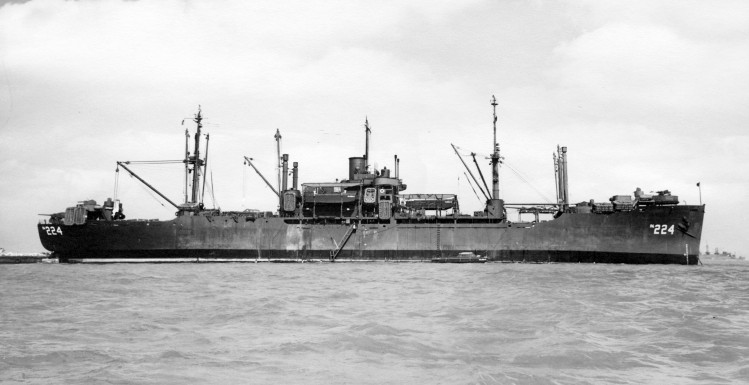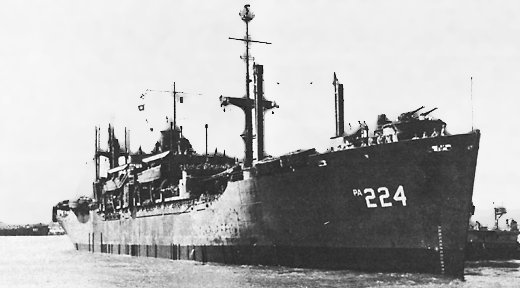Warning: Undefined array key 1 in /webroot/r/r/rrandall001/bull-randall.com/www/lib/plugins/note/syntax.php on line 103
Warning: Undefined array key 1 in /webroot/r/r/rrandall001/bull-randall.com/www/lib/plugins/note/syntax.php on line 103
Table of Contents
Horace Randal (Brigadier General, CSA)
The son of Dr. John Leonard Randal and Sarah McNeil (Kyle) Randal, Horace Randal was born on January 4, 1833, in McNairy County, Tennessee. 1)
In 1839 the family moved to Texas and settled near San Augustine.
John L. and Sarah's son Horace Randal (b. 1833, McNairy Co., TN; d. 1864, Battle of Jenkins Ferry, AR, bur. Harrison Co., TX)
In 1849 Horace Randal and James B.McIntyre became the first Texas appointees to the United States Military Academy at West Point. He was a Cadet at the Military Academy, July 1, 1849, to July 1, 1854. Randal spent five years at the academy because of a deficiency in mathematics and English and thus was the second Texas graduate from West Point. After five years in attendance, Horace Randal graduated from the United States Military Academy on July 1, 1854, ranking forty-fifth out of forty-six in his class. Upon his graduation from West Point, Randal was brevetted second lieutenant in the 8th United States Infantry on July 1, 1854. 2) 3)
He subsequently served on frontier duty in conducting Recruits to Ft. Washita, (Indian Territory), 1854‑55. On March 3, 1855, he was transferred to Company G, 1st U.S. Dragoons, with the substantive rank of Second Lieutenant. He was stationed at Ft. Davis, Tex., 1855, — Scouting, 1855, being engaged against Apache Indians in the surprise of their camp near Ft. Bliss, Tex., July 22, 1855, — Ft. Union, N. M., 1855, — Las Lunas, N. M., 1855‑57, being engaged against Apache Indians, in a Skirmish near the Almagre Mountains, N. M., Apr. –––––, 1856, and in an Action near Gila River, Nov. 30, 1856, — and Ft. Buchanan, N. M., 1857; on Recruiting service, 1858; and on frontier duty at Ft. Buchanan, N. M., 1859‑60. 4) 5)
In 1857, United States Secretary of War, Jefferson Davis, recommended that Randal receive the rank of brevet First Lieutenant for gallant and meritorious conduct in the conflict with the Apaches. 6)
Horace Randal (at age 25) married Julia S. Bassett (age 23), on June 2, 1858, in New London, Connecticut. Julia was born on January 7, 1835 in New London, CT., and was the daughter of Abner Bassett (born about 1813) and Mrs. Bassett (born about 1815). Julia accompanied Horace to the southwestern frontier and was living with him in 1860 at Fort Buchanan, New Mexico Territory, fifty miles southeast of Tuscon. Julia was unable to withstand the rigors of frontier life and died August 25, 1860 (possibly during childbirth), in New London, CT. She was buried in Cedar Grove Cemetery (U.S. Newspaper Extractions 1704-1930, Reporting death of Julia S. Randal). Newborn Randal was born that day, but died within that same month, and was buried in Cedar Grove Cemetery.7)
Randal was in Washington, D.C. during the week before Abraham Lincoln was inaugurated as President of the United States. The U.S. Army's General-in-Chief. Brevet Lieutenant General Winfield Scott, offered Randal a Regular Army commission as major. Randal decided to go with his home state of Texas into the Confederate States of America (the C.S.A.). He resigned from the U.S. Army on February 27, 1861.
Randal resigned from the United States Army on February 27, 1861, to join the Army of the Confederate States of America (CSA), and was commissioned a first lieutenant in the cavalry on March 16,1861. He first served in Gen. Braxton Bragg's quartermaster corps at Pensacola, Florida, and was later transferred to the Army of Northern Virginia. On November 16, 1861, he was appointed aide-de-camp to Maj. Gen. Gustavus W. Smith. He was commissioned a colonel of cavalry on February 12, 1862, and recruited the 28th Texas Cavalry regiment (Dismounted) in and around Marshall. Randal recruited his father, brother and brother-in-law as members of his regimental staff.
Randal was commissioned a first lieutenant in the Army of the Confederate States, the regular army of the Confederacy, on March 26, 1861, to rank from March 16, 1861. By April 25, 1861, when Randal was ordered to report to General Braxton Bragg at Pensacola, Florida to serve as quartermaster on Bragg's staff. Randal, however, complained to President Davis that others who were junior to him in the U.S. Army had been given higher grades or ranks and resigned.
Randal intended to return to Texas to raise a regiment for the Confederate Army. At the request of his brother-in-law, Major General Gustavus Woodson Smith, he remained in northern Virginia as a volunteer aide on Smith's staff. Although Jefferson Davis was reluctant to reappoint an officer who had recently resigned, he was persuaded by Smith to appoint Randal as a lieutenant and aide to Smith. He became a favorite officer of General Joseph E. Johnston while acting as inspector general of G. W. Smith's corps during the winter of 1861–1862.
Randal was authorized to raise a regiment of cavalry in Texas on December 19, 1861. Randal was known by his contemporaries, such as his West Point roommate John Bell Hood, as an excellent horseman. On February 12, 1862, he returned to Texas to organize and take command of the new 28th Texas Cavalry Regiment. 8)
28th Cavalry Regiment ("Randal's 1st Texas Lancers")
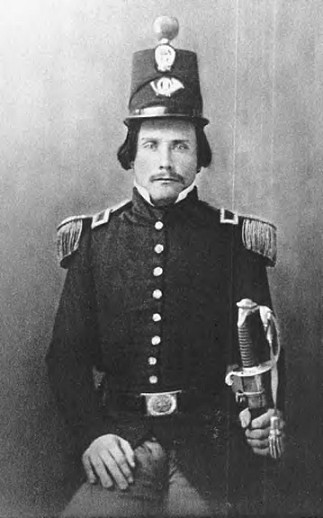 Colonel Horace Randal began assembling the 28th Texas Cavalry regiment at a camp three miles east of Marshall, Texas. In April 1862, Companies B and E from Cherokee County arrived at the camp followed by companies A, C, D, F, and G in May. In June, Company K was formed by surplus men from companies A and C. The remaining companies (H, I, L, and M) joined the regiment in July.9) The regiment ultimately consisted of about 1,021 men.
Colonel Horace Randal began assembling the 28th Texas Cavalry regiment at a camp three miles east of Marshall, Texas. In April 1862, Companies B and E from Cherokee County arrived at the camp followed by companies A, C, D, F, and G in May. In June, Company K was formed by surplus men from companies A and C. The remaining companies (H, I, L, and M) joined the regiment in July.9) The regiment ultimately consisted of about 1,021 men.
Because the 28th Texas Cavalry was not formed at the outset of war, its membership was a little different from some of the other Texas Confederate regiments. On average, the men were older, more likely to be married, and less affluent. Consequently, the Twenty-eighth had to take out an advertisement in the “Marshall Texas Republican” for weapon donations. 10)
Throughout its existence, the 28th Texas Cavalry regiment would operate under command of the Trans-Mississippi Department.11)
Field and Staff
- Colonel Horace Randal
- Lt.Colonel Eli H.Baxter, Jr.
- Major Henry Gerard Hall (later promoted to Lieutenant Colonel. His prior position was filled by Major Patrick Henry)
- Surgeon John Leonard Randal (Col. Horace Randal's father)
- Assistant Surgeon William P. Smith
- Adjutant George T. Howard
- Quartermaster Alfred M. Truitt
- Commissary John A. Harris
- Chaplain Frank J. Patillo
It's members were primarily from the following counties:
Company A (Shelby County)
- Captain Levi M. Truitt
- 1st Lt. James M. Clardy
- 2nd Lt. Thomas J. Todd
- 2nd Lt. Samuel C. Heath
Company B (Cherokee County)
- Captain Patrick Henry (later promoted to Major)
- 1st Lt. Allen Jones
- 2nd Lt. James R. Rowe
- 2nd Lt. J. C. Clark
Company C (Panola County)
- Captain A. W. DeBerry
- 1st Lt. P. W. Clements
- 2nd Lt. David N. Walker
- 2nd Lt. John O. Thomas
Company D (Rusk, Smith, and Wood Counties)
- Captain Martin V. Smith
- 1st Lt. Edward W. Cade
- 2nd Lt. John R. Scales
- 2nd Lt. Frank M. Hays
Company E (Cherokee County)
- Captain Orlands M. Doty
- 1st Lt. W. J. Thompson
- 2nd Lt. W. D. Wolfe
- 2nd Lt. S. G. Wolfe
Company F (Harrison County)
- Captain Phil Brown
- 1st Lt. Theophilus Perry
- 2nd Lt. James S. Wagnon
- 2nd Lt. Rene Fitzpatrick, Jr.
Company G (Anderson County)
- Captain William H. Tucker
- 1st Lt. William B. Key
- 2nd Lt. W. F. Roberts
- 2nd Lt. George B. Campbell
Company H (Freestone County)
- Captain J. C. Means
- 1st Lt. L. J. Hale
- 2nd Lt. Jesse Sheffield
- 2nd Lt. W. A. Cobb
Company I (Houston County)
- Captain John A. McLemore
- 1st Lt. William R. Vaughn
- 2nd Lt. Charles Stokes
- 2nd Lt. James L. Hallmark
Company K (Panola, Shelby Counties)
- Captain Pat H. Martin
- 1st Lt. Marion T. Haskins
- 2nd Lt. William Neal Ramey
- 2nd Lt. James M. Trosper
Company L (Houston County)
- Captain David A. Nunn
- 1st Lt. Henry G. McDaniel
- 2nd Lt. A. H. Casteel
- 2nd Lt. W. J. Foster
Company M (Polk County)
- Captain L. B. Wood
- 1st Lt. William Harrison
- 2nd Lt. F. N. Jones
- 2nd Lt. John F. Sharp
Marriage to Nannie E. Taylor (2nd Wife)
On July 8, 1862, on the eve of his departure with his new regiment, Col. Horace Randal (at age 29) married his second wife, Nannie E. Taylor (then age 16) in Marshall, TX. Nannie was the daughter of Samuel J. Taylor (born about 1806) and Nancy E. (born about 1818). Nannie E. Taylor was born in 1846 in South Carolina. Horace and Nannie Randal had one son, Horace Randal, Jr., born in December 1863 in Forth Worth, TX.
Departure to Shreveport, LA
On July 9, 1862, the regiment of twelve companies paraded through Marshall, TX and traveled to Shreveport, Louisiana, where they remained until July 18, 1862. The regiment then traveled northward to join Colonel Allison Nelson's troops bivouacked in an area North of Little Rock, Arkansas, known as Argenta (although it wasn't platted until 1866 - and in 1903 became part of what is now North Little Rock, Arkansas)13). Argenta became an important gathering spot for Confederate troops, and at one point 10,000 Confederate troops were stationed in the area.
Argenta & Camp Nelson
On September 3, 1862, the 28th Texas Calvary arrived in Argenta (North Little Rock, Arkansas), where Colonel Allison Nelson had recently received news that Union forces were mounting an offensive from Pea Ridge, southeast toward Des Arc. Nelson had been ordered to send men and supplies north toward Pea Ridge, with the assurance that he would be resupplied. On September 12th, Nelson was promoted to the rank of Brigadier General. Two weeks later, he was reinforced by the arrival of Colonel George Flournoy's 16th Texas Infantry from Austin County. But the promised supplies never came.14)
By late September, most of the 28th Texas Calvary was dismounted (i.e. the unit was converted to infantry). The 28th Texas Cavalry was dismounted because of a surplus of cavalry units in Arkansas and because of a lack of forage for the horses. The men refused to call themselves “infantry” instead preferring the term “dismounted cavalry” as though it were a temporary condition. Much to the disappointment of the men, the 28th Texas was never remounted. The unit was brigaded with the 11th Texas Infantry, the 14th Texas Infantry (who absorbed Company M), the 15th Texas Infantry, and the 6th Texas Cavalry Battalion (dismounted). Company L remained mounted and became part of Lt. Colonel Charles L. Morgan's Texas Cavalry Regiment. Col. Horace Randal was promoted to Brigade Commander and given command of this brigade15). At that time Lt. Colonel Eli H. Baxter, Jr. (who had enlisted as a Captain in the 28th Texas Calvary, Company F, when it formed) was promoted to Colonel and assigned command of the 28th Texas regiment.16)17)
On October 2nd, Nelson and Brigadier General H. E. McCulloch, with a combined force of 25,000 Texas and Arkansas troops, were dispatched on an ill-fated, 55-mile trek to the east, across the swamps of Grand Prairie to Clarendon Heights on the White River. They arrived in a driving rainstorm on the evening of October 4th. Almost immediately, word came that an enemy force was moving up the Arkansas River – in an apparent attempt to split the Confederate Army in half. So, on October 9th, the weary and ill-clad troops packed up and started back to Argenta, Arkansas through the mud and knee-deep water. The first night on the trail, a blustery norther swept across the land, bringing with it a storm of hail, followed by more rain and then sleet. Fighting the cold, benumbing, wind-swept bogs of Grand Prairie for two miserable days and nights, the now-exhausted men, many of them sick with chills and fever, arrived back at Argenta – only to learn that the rumored Union offensive had been a false alarm. Their forced march had been for naught. Even worse, General Nelson was no longer with his men. Taken ill on the trip out, he had been carried back to Little Rock, were he died of pneumonia on October 7, 1862. With an honor guard provided by Colonel J. W. Spaight's 15th Texas Regiment, he was buried in Little Rock's Mount Holly Cemetery. General Henry E. McCulloch was now in sole command of the sick and bedraggled troops.18)
On the morning of October 14th, McCulloch was ordered to leave the bivouac at Argenta and move northeast a distance of 14 miles, into winter quarters at Camp Hope“, two miles east of the village of Austin. To honor General Allison Nelson, McCulloch renamed the new encampment. Henceforth, it would be known as “Camp Nelson”.
Tents were erected in a clearing along a belt of woods, where the surrounding hills provided at least partial shelter from the onslaught of the frigid north winds. Even so, epidemics of typhoid and black measles, intensified by a fouled water supply, began at once to take their toll. Approximately 1,500 Arkansas and Texas soldiers died of disease during a two-month period. Since there was no official graveyard nearby, the bodies were buried in unmarked graves in the surrounding hills and in various locations around the town of Old Austin. 19)20)
Early in November, McCulloch was assigned the task of making a general organization of the surviving Texas Infantry. This revamped division, consisting of four brigades of able-bodied men, departed Camp Nelson on November 24th, bound for Little Rock and thence to Pine Bluff. By December 1862, Horace Randal commanded a brigade under Brigadier General Henry McCulloch.
On New Year's Day 1863, Major General John G. Walker assumed command of McCulloch's troops.21)
Walker's Greyhounds
[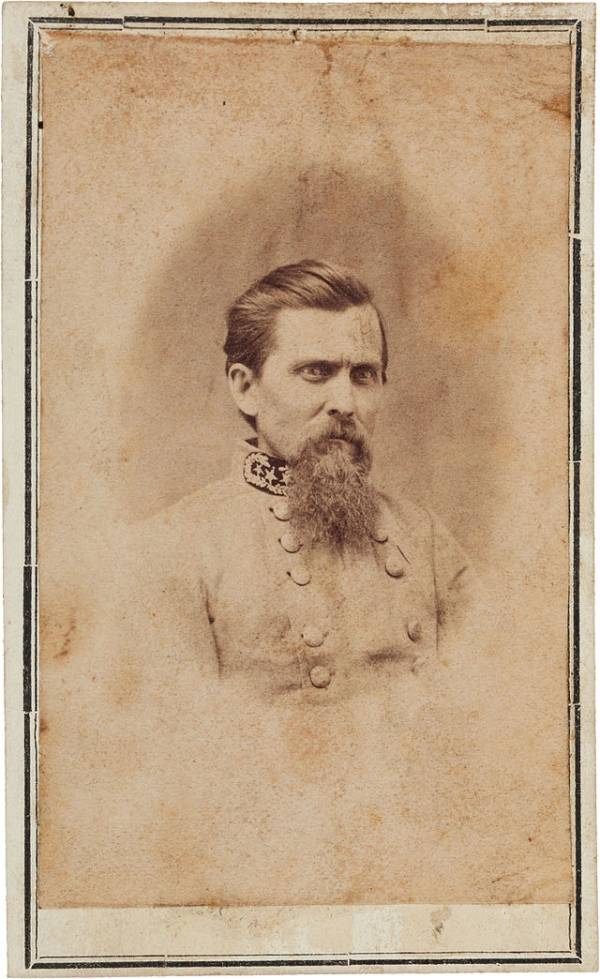 ]
Commanded by Major General John G. Walker, “Walker's Greyhounds”, also known as “Walker's Texas Division”, was a division of the Confederate States Army composed exclusively of units from Texas. Brigade Commander Horace Randal was given command of its 2nd Brigade.
]
Commanded by Major General John G. Walker, “Walker's Greyhounds”, also known as “Walker's Texas Division”, was a division of the Confederate States Army composed exclusively of units from Texas. Brigade Commander Horace Randal was given command of its 2nd Brigade.
Composition
1st Brigade
Col. Overton C. Young
Brig. Gen. James M. Hawes
Brig. Gen. Thomas N. Waul
Brig. Gen. Wilburn H. King
- 12th (Young's 8th) Infantry
- 18th Infantry (transferred to the 4th Brigade)
- 22nd Infantry
- 13th (Dismounted) Cavalry
- 29th (Dismounted) Cavalry (joined in 1865)
- Haldeman's Battery
2nd Brigade
Brig. Gen. Horace Randall
Brig. Gen. Robert P. Maclay
- 11th Infantry
- 14th Infantry
- 28th (Dismounted) Cavalry (later transferred to the 4th Brigade)
- 6th (Goult's) (Dismounted) Cavalry Battalion
- Daniel's Battery
3rd Brigade
Col. George M. Flournoy
Brig. Gen. Henry E. McCulloch
Brig. Gen. William R. Scurry
Brig. Gen. Richard Waterhouse
- 16th Infantry (later transferred to the 4th Brigade)
- 17th Infantry
- 19th Infantry
- 16th (Dismounted) Cavalry
- 2nd Partisan Rangers (joined in 1865)
- 3rd Texas Infantry (only during the Red River Campaign)
- Edgar's Battery
Original 4th Brigade
(the brigade was detached and captured at the Battle of Arkansas Post) Brig. Gen. James Deshler
- 10th Infantry
- 15th (Dismounted) Cavalry
- 18th (Dismounted) Cavalry
- 25th (Dismounted) Cavalry
4th Brigade (1865)
Brig. Gen. Wilburn H. King
- 16th Infantry
- 18th Infantry
- 28th (Dismounted) Cavalry
- 34th (Dismounted) Cavalry
- Wells' Cavalry Battalion
The original regiments of the Fourth Brigade were detached from the division shortly after its organization, and these were captured intact by Union troops at Arkansas Post on January 11, 1863. Late in the war another Fourth Brigade was reconstituted which included the Sixteenth and Eighteenth Texas infantry regiments and the Twenty-eighth and Thirty-fourth Texas cavalry regiments (dismounted). At the same time the Twenty-ninth Texas Cavalry (dismounted) was added to the First Brigade and the Second Regiment of Texas Partisan Rangers (dismounted) to the Third Brigade.22)
The Battles of Milken's Bend & Young's Point (June 7, 1863)
In March 1863, the new commander of the Trans-Mississippi Department, Lt. Gen. Edmund Kirby-Smith, assigned the Greyhounds to Maj. Gen. Richard Taylor's Western Louisiana command, and they were given the task of attacking Maj. Gen. Ulysses S. Grant's supply line that ran on the western bank of the Mississippi River on the Louisiana side opposite the besieged Vicksburg, Mississippi. Taylor, who commanded Walker in this campaign, had argued against the venture to his superior Smith. He argued that Walker's troops would be better used helping his Army of 4,000 attack New Orleans, whose defense had been severely weakened by the movement of Banks' Army of the Gulf upriver to Port Hudson.23)
The Confederate battle plan was to send Brig. Gen. James M. Hawes's 1st brigade of Walker's Greyhounds to attack Young's Point, a small town on the Mississippi River occupied by the Union Army of the Tennessee after the Battle of Chickasaw Bayou on December 27–29, 1862. Young's Point was used as a staging area for the Arkansas Post Expedition and by Adm. David D. Porter's Mississippi River Squadron as an advanced naval station during that time.24) Simultaneously, Brig. Gen. Henry E. McCulloch's brigade of Walker's Greyhounds (which included the 2nd Brigade commanded by Horace Randal) were to cut Grant's supply line by attacking Milliken’s Bend on the Louisiana side of the Mississippi River, about 10 miles northwest of Vicksburg, Mississippi. The outpost had become an important Federal supply depot supporting General Grants siege on Vicksburg, Mississippi (being defended by Confederate Lt. Gen. John C. Pemberton's forces).25)26)
The Union forces at the battle of Milliken’s Bend would be composed of the 9th Louisiana Infantry, African Descent; the 11th Louisiana Infantry, A.D.; the 13th Louisiana, A.D.; the 1st Mississippi Infantry, A.D.; and a small fragment of about 120 men from the all-white 23rd Iowa Infantry who were called in as reinforcements.27)
On the dawn of June 7, 1863, the 16th Texas Infantry, the 16th Texas Cavalry (Dismounted), the 17th Texas Infantry, and the 19th Texas Infantry charged the Union works at Milliken’s Bend. Some men could only get off one shot before the two lines crashed together atop a fortified levee. Fierce hand-to-hand combat ensued, and in moments, the Union line was overpowered. The Union troops fell back pell-mell to a second levee to try to recover, but they were again overwhelmed by the Confederate forces, and tumbled back to the riverbank – their absolute last line of defense. However, the Union garrison was saved by heavy artillery from two gunboats, the “Choctaw” and “Lexington”, which halted the Confederate attack. The battle petered out sometime late in the morning. Both sides were exhausted, and the thermometer registered 95 degrees. McCulloch withdrew his Walker's Greyhounds, rested his men, and tended to his casualties.28)
Both sides were stunned at the violence of the battle. Numerous reports from companies on both sides had losses of nearly 50% in killed and wounded. Although both sides brought about the same number of men to the fight, the casualties were extraordinary. Union forces lost over 100 men killed, and nearly 250 wounded. McCulloch lost almost 200 killed, wounded, and missing. The Confederate troops took a large number of Federals prisoner.29)
As Brig. Gen. Henry E. McCulloch's brigade of Walker's Greyhounds battled Union troops at Milliken's Bend, their fellow Texans of Brig. Gen. James M. Hawes's brigade moved against Young's Point. Provided with inefficient local guides and faulty intelligence, Hawes's Brigade, 1,400-strong, left Richmond (south of Tallula) at 7:00 p.m. on June 6. Lack of reconnaissance led the brigade to consume 17 hours to march 11 miles, because the men had to halt for 4½ hours at a damaged bridge over Walnut Bayou, while scouts searched for a suitable crossing point. Instead of arriving at dawn as planned, the exhausted brigade reached the vicinity of Young's Point at 10:30 a.m.30)
Informed that his men could approach the Union encampment through woods, Hawes was shocked as his command debouched on to the open fields of a level plain in full view of the Union camp situated below Young's Point some 1½ miles in the distance. As the Texans advanced across the fields, they saw Union reinforcements arrive by transports supported by gunboats. Realizing that the chances for success had disappeared, Hawes ordered his troops to retire.31)
After Milliken's Bend and Young's Point, Taylor again requested Walker's troops to aid in his attack on New Orleans, but Smith again denied the request. Walker spent the balance of the summer fruitlessly patrolling the northeastern area of Louisiana, unable to cross the Mississippi and support the besieged Vicksburg.
Walker headed back to Arkansas in late 1863.
Below is a transcipt of a report from Col. Horace Randal written during Sept, 1863.32)
Headquarters, Randal's Brigade
Sulphur Springs, La.
September 5, 1863, 9:40 A. M.
MAJOR E. SURGET
Assistant Adjutant General
Alexandria, La.
MAJOR: I have the honor to report that the enemy near 5,000 strong met me yesterday morning at the break of day 12 miles this side of Fort Beauregard, there cutting off the possibility of a junction with the forces at the fort under Lieutenant-Colonel Logan. I drove in his pickets, and withdrew my command, having deceived the enemy. My retreat was followed up to the junction of the upper and lower Alexandria roads. I have heard of no farther advance on either road in the direction of Alexandria.
Lieutenant-Colonel Logan abandoned the fort between 2 and 3 o'clock yesterday morning, retiring by Centreville and Natchitoches road. He saved four pieces of artillery. He is now near Little River at Gilmore's Ferry, where he will cross today.
I retired by the Alexandria road for two reasons–to protect Colonel Logan, and to prevent a flank movement upon my rear. If it is designed that I should retire to Alexandria, I have rations; otherwise I will forward my trains. Colonel Logan will join me tomorrow. I will continue my march toward Alexandria, crossing the river today, unless otherwise ordered. I have sent out scouts to ascertain the position of the enemy on the roads leading from this place to the Washita (Ouachita) River. Three different persons have seen the enemy's camp near Trinity, and all report them 16,000 strong. I will learn everything I can, and have reports made without delay. I will make a full report as soon as I reach my desk and have time.
Respectfully, your obedient servant.
HORACE RANDAL
Colonel, Commanding Brigade
Battle of Mansfield, Louisiana (April 8, 1864)
During the second half of March 1864, a combined force from the Union Army of the Gulf and navy (roughly 30,000 men) led by Major General Nathaniel P. Banks had advanced approximately 150 miles up the Red River on a mission (conceived in part by former General-in-Chief, Henry Halleck) to destroy the Confederate army under Maj. Gen. Richard Taylor and capture Shreveport, Louisiana, thus seizing control of the Red River.33) By April 1 Union forces had occupied Grand Ecore and Natchitoches. While the accompanying gunboat fleet with a portion of the infantry continued up the river, the main force followed the road inland toward Mansfield, where Banks knew Confederate troops were concentrating.34)35)))
Retreating up the river for most of March, Maj. Gen. Richard Taylor, in command of the Confederate forces in Louisiana, was slowly collecting reinforcements from Texas and Arkansas. Taylor, without instructions from his commanding officer Gen. E. Kirby Smith, decided to try to stem the Union advance at a clearing a few miles south of Mansfield, near Sabine Crossroads, an important communications center. Fully aware that his Confederates were outnumbered nearly two to one, Taylor said he would “fight Banks here [Mansfield] if he has a million men.”36) Sending his cavalry to harass the Union vanguard as it approached, Taylor called his infantry divisions forward.37)38)
Taylor knew the Union force would not be routed easily. So he created a trap, stationing his men across Mansfield Road in an arc formation, just on the north side of an open field. Maj. Gen. John G. Walker’s three brigades were then placed in a battle line approximately 500 yards on either side of the road. Walker’s force was to take the first hit, with Brig. Gen. Alfred Mouton’s two brigades on Walker’s left there to attack once the Union forces were engaged. Brig. Gen. Thomas Green’s cavalry edged out both flanks.39)
The morning of April 8 found Banks' army stretched out along a single road through the woods between Natchitoches and Mansfield. When Union cavalry at the front of the column, led by Brig. Gen. Thomas Ransom, encountered the Confederates taking a strong position along the edge of a clearing, it stopped. Concerned about hidden Confederate forces, Ransom called for Union infantry support. Riding to the front, Banks decided that he would fight Taylor at that spot and he ordered all his infantry to hurry up the road.40) Banks probed the Confederate lines for the remainder of the morning, but without launching a full-scale attack.41)42)
At the start of the battle, Taylor had approximately 9,000 troops consisting of Brigadier General Alfred Mouton's Louisiana/Texas infantry division, Major General John G. Walker's Texas infantry division, Brigadier General Thomas Green's Texas Cavalry Division, and Colonel William G. Vincent's Louisiana cavalry brigade.43) He had also called on the 5,000 men in the divisions of Brigadier General Thomas J. Churchill and Brigadier General Mosby M. Parsons which had been encamped near Keachie, between Mansfield and Shreveport. These troops arrived late in the afternoon, after the battle had commenced.44)
Anecdotal evidence indicates that there were additional Louisiana men in the ranks. This included paroled soldiers from units that had surrendered at Vicksburg. Historian Gary Joiner claimed that “there may have been from several hundred to several thousand of them.”45) The Confederate Governor of Louisiana, Henry Watkins Allen, had organized two battalions of the State Guard and brought them to Taylor's aid, yet the documentary record is unclear as to what role they played in the battle.46) Joseph Blessington, a soldier in Walker's Division, wrote that “The Louisiana militia, under command of Governor Allen, was held in reserve, in case of an emergency.” In addition, Blessington wrote that, from the surrounding communities, “old men shouldered their muskets and came to our assistance”.47)
During the morning, Taylor positioned Mouton’s division on the east side of the clearing. Walker’s division arrived in the afternoon and formed on Mouton's right. As Green's cavalry fell back from the advancing US forces, two brigades moved to Mouton’s flank and the third to Walker’s flank. The Arkansas division arrived around 3:30pm but was sent to watch a road to the east.48) The Missouri division did not arrive until around 6pm, after the battle was fought.49)
[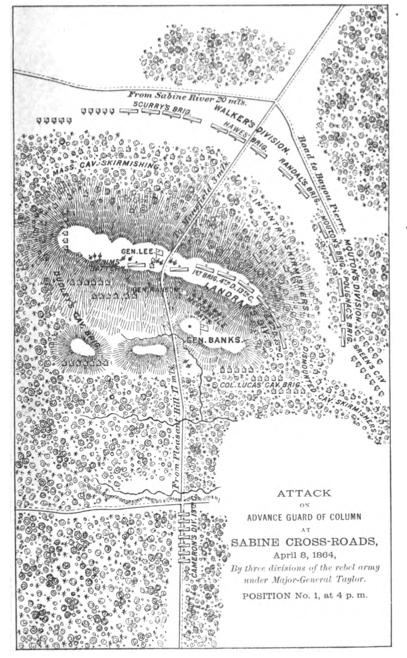 ]
About noon, the Union cavalry division supported by one infantry brigade of Landram's division was deployed across a small hill at the south end of the clearing. Shortly thereafter the other brigade of Landram's division arrived. Cameron's division was on its way, but would not get there until the battle had already begun.50) Banks ordered an advance that afternoon, but was rebuffed by Brig. Gen. Albert Lee, who insisted their position was too precarious. Banks reconsidered and called for additional cavalry reinforcements. While Banks waited, Taylor sent his infantry and a battery of artillery forward in an effort to draw the Federals into battle.51)
]
About noon, the Union cavalry division supported by one infantry brigade of Landram's division was deployed across a small hill at the south end of the clearing. Shortly thereafter the other brigade of Landram's division arrived. Cameron's division was on its way, but would not get there until the battle had already begun.50) Banks ordered an advance that afternoon, but was rebuffed by Brig. Gen. Albert Lee, who insisted their position was too precarious. Banks reconsidered and called for additional cavalry reinforcements. While Banks waited, Taylor sent his infantry and a battery of artillery forward in an effort to draw the Federals into battle.51)
For about two hours the two sides faced each other across the clearing as Banks waited for more of his troops to arrive and Taylor arranged his men. At that point, Taylor enjoyed a numeric advantage over Banks. Recognizing that Banks wasn't going to take the “bait”, Taylor ordered the advance of the entire Confederate line to commence at 4:00p.m. Immediately, Mouton’s division encountered difficulties in the center of the line (on the east side of the road). Though Mouton managed to rally his men, he was mortally wounded and several of his regimental commanders were hit as well. Ultimately, the charge of his division was repulsed by Union troops.52)53)54)
However, west of the road, Walker's Texas division wrapped around the Union position, folding it in on itself. Very soon, the collapse on Banks’ left led to withdrawal along the whole line, and eventually devolved into a rout in which the Union force left three pieces of artillery in Confederate hands. Ransom was wounded trying to rally his men and was carried from the field; hundreds of Union troops were captured and the rest retreated in a panic.55)56)57)
Banks, finally understanding the gravity of the situation, called for additional reinforcements. Brig. Gen. Robert Cameron’s division of the Thirteenth Army Corps hastened to the front to bolster the line, but was delayed by the Federals’ own supply trains. After extricating his troops, Cameron established a second battle line approximately one mile south of Moss Plantation. Once more, the Confederates rolled up the Union line. Flush with success, Taylor pushed Walker’s, Polignac’s (who had taken command of Mouton’s division), and Green’s divisions forward, adding to the confusion of the Union retreat. Federal reinforcements, however, were coming to stem the flood. Without orders, Union Brig. Gen. William H. Emory quickened his pace to the front, leading his Nineteenth Corps towards the battle. Emory knew a defensible post was vital to support the retreating Federals and to prevent additional Confederate advances. He found a hill bordered by Chatman Bayou Creek and a small orchard, called Pleasant Grove, and decided to make his stand there. He placed approximately 5,000 men across Mansfield Road, forming a wall of soldiers with their rifles aimed at the advancing Confederates.58)
For several miles the Confederates pursued the retreating Union troops until they encountered the third line formed by Emory's division at 6:00 pm which halted the Confederate advance after more than an hour's fighting. That night, Taylor unsuccessfully attempted to turn Banks' right flank by launching several charges on the Union line, but were repulsed. Throughout the night, Banks withdrew his forces to Pleasant Hill, LA.59)60)
The Union forces had suffered 113 killed, 581 wounded, and 1,541 captured as well as the loss of 20 cannon, 156 wagons, and a thousand horses and mules killed or captured. More than half of the Union casualties were from 4 regiments – 77th Illinois, 130th Illinois, 19th Kentucky and 48th Ohio. Most of the Union casualties occurred in the XIII Corps, while the XIX Corps lost few men.61) Kirby Smith would report that Confederate loss was “about 1,000 killed and wounded” at Mansfield, but precise details of Confederate losses were not recorded.62)
Though Taylor was frustrated with the outcome of the day, Mansfield was still a strategic victory for the Confederates. Taylor displayed excellent generalship, maneuvering his force to overwhelm individual parts of the larger Union army.
Appointment to Brigadier General
After the Battle of Mansfield, Col. Horace Randal was appointed Brigadier General by Gen. E. Kirby Smith on April 8, 1864. However, his promotion was never confirmed by the Confederate government (possibly because Randal was killed in battle less than a month after his appointment).
The Battle of Pleasant Hill, Louisiana (April 9, 1864)
The Battle of Pleasant Hill was essentially a continuation of the Battle of Mansfield (8 April), a decisive Confederate victory, which had caused the Union commander Nathaniel Banks to send his wagons, with most of his artillery, downriver in retreat. The next morning, Union forces took up a position on Pleasant Hill. 63)
The road from Mansfield to Pleasant Hill was ”littered by burning wagons, abandoned knapsacks, arms, and cooking utensils. Federal stragglers and wounded were met by the hundreds and were quickly rounded up (by Confederate forces) and sent to the rear,“ explains the historian John D. Winters of Louisiana Tech University in his “The Civil War in Louisiana”.64)
Union reinforcements arrived when Maj. Gen. Andrew J. Smith, commanding detachments of XVI and XVII Corps, arrived from Grand Ecore late on the April 8, around nightfall, and encamped about 2 miles (3.2 km) from Pleasant Hill.65)
Confederate reinforcements had arrived late on the April 8—Churchill's Arkansas Division arrived at Mansfield at 3.30 p.m. and Parson's Missouri Division (numbering 2,200 men) arrived at Mansfield at 6 p.m. Neither of these Divisions participated in the Battle of Mansfield — however, both would play a major role during the Battle of Pleasant Hill.66)
[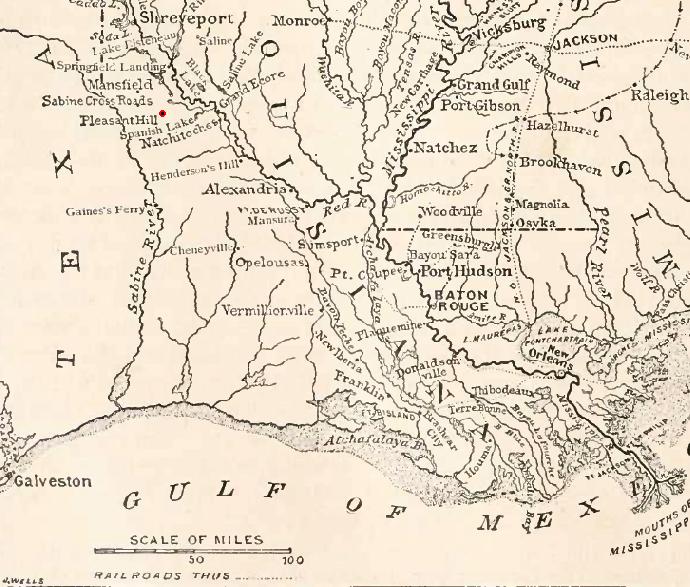 ]
The Battle of Mansfield took place about 3 miles (4.8 km) southeast of the town of Mansfield at Sabine Cross Roads. Pleasant Hill was located about 16 miles (26 km) southeast of Sabine Cross Roads. Dr. Harris H. Beecher, Assistant-Surgeon, 114th New York Volunteer Infantry Regiment, present at the battle, described the village of Pleasant Hill as ”a town of about twelve or fifteen houses, situated on a clearing in the woods, of a mile or so in extent, and elevated a trifle above the general level of the surrounding country.“ Historian John Winters describes Pleasant Hill as a ”piney-woods summer resort consisting of a dozen or more houses clustered along a cleared knoll, offered Banks many advantages as a battlefield, but because of the great distance from the main supply base at Alexandria and the serious lack of sufficient drinking water for an entire army, Banks could not hold this position for any length of time. During the one day, April 9, most of the rain water stored in the cisterns was depleted. Without making a final decision concerning the future of his campaign, Banks sent his wagon trains… on the way toward Grand Ecore… . “.67)
]
The Battle of Mansfield took place about 3 miles (4.8 km) southeast of the town of Mansfield at Sabine Cross Roads. Pleasant Hill was located about 16 miles (26 km) southeast of Sabine Cross Roads. Dr. Harris H. Beecher, Assistant-Surgeon, 114th New York Volunteer Infantry Regiment, present at the battle, described the village of Pleasant Hill as ”a town of about twelve or fifteen houses, situated on a clearing in the woods, of a mile or so in extent, and elevated a trifle above the general level of the surrounding country.“ Historian John Winters describes Pleasant Hill as a ”piney-woods summer resort consisting of a dozen or more houses clustered along a cleared knoll, offered Banks many advantages as a battlefield, but because of the great distance from the main supply base at Alexandria and the serious lack of sufficient drinking water for an entire army, Banks could not hold this position for any length of time. During the one day, April 9, most of the rain water stored in the cisterns was depleted. Without making a final decision concerning the future of his campaign, Banks sent his wagon trains… on the way toward Grand Ecore… . “.67)
On the morning of the April 9, Franklin ordered the baggage train to proceed to Grand Ecore. It left Pleasant Hill at 11 a.m., and included many pieces of artillery. Most of Franklin's Cavalry (commanded by Brig. Gen. Albert Lindley Lee) and the XIII Corps left with it. This included the Corps D'Afrique commanded by Colonel William H. Dickey (wounded on April 8) and Brig. Gen. Thomas E. G. Ransom's detachment of the XIII Corps, now under the command of Brig. Gen. Robert A. Cameron — Ransom was also wounded on the April 8. The baggage train made slow progress and was still only a few miles from Pleasant Hill when the major fighting began later that day. Brig. Gen. Charles P. Stone, Chief of Staff, and others, attempted to get Cameron to return to Pleasant Hill throughout the day, but he failed to do so — he stated that he never received any written orders to return. Banks doesn't appear to have been fully aware of the exact orders Cameron had received from Franklin.68)
According to Maj. Gen. Nathaniel P. Banks' Report of the Battle, ”The enemy began to reconnoiter the new position we had assumed at 11 o'clock on the morning of the 9th, and as early as 1 or 2 o'clock opened a sharp fire of skirmishers, which was kept up at intervals during the afternoon.“69)
At 5 p.m., Confederate forces launched their attack, charging the entire Union line.70) The Union force lost 18 pieces of artillery at the Battle of Mansfield. These were turned on the Union forces at Pleasant Hill. Confederate Brig. Gen. Jean Jacque Alexandre Alfred Mouton was killed during the Battle of Mansfield, April 8, 1864; Brig. Gen. Camille J. de Polignac commanded Mouton's forces at Pleasant Hill.71) Walker's and Mouton's attack on the Union right had little success — the Union right, for the most part, held its ground. However, overall, this initial charge by the Confederates was highly successful and many of the positions down the Union left and center were overrun by Churchill's and Parson's forces and the Union positions were forced backwards. However, the Union side succeeded in halting the advance and regained the left and center ground, before driving the Confederates from the field.72) The fiercely fought battle lasted about two hours.73) Losses were heavy on both sides. The 32nd Iowa Infantry sustained especially heavy casualties, as it was cut off from the rest of the Union forces during the battle.74)
Confederate Brig. Gen. Hamilton P. Bee, with two regiments in columns of four rode swiftly down the Pleasant Hill road toward the enemy lines. The Confederate forces were suddenly ambushed at close range by Union troops concealed behind a fence. Winters describes the scene, accordingly: “Men toppled from their saddles, wounded horses screamed in anguish, and for a moment pandemonium reigned. Bee's men took temporary shelter . . . in a series of small ravines studded with young pines until they recovered from the shock of the unexpected attack. Bee rallied his men but in the process had two horses shot from under him. Colonel [Xavier B.] Debray was injured when he fell from the saddle of his dead horse. . . . Debray was able to withdraw his men safely to the rear leaving, however, about a third of them killed or wounded on the front.”75)
Banks and his army began their retreat from Pleasant Hill at 1 a.m. on the morning of the April 10 (just a few hours after the battle had ended).76)
Confederate Trans-Mississippi Department commander Lt. Gen. Edmund Kirby Smith, who was at Shreveport, received a dispatch from Taylor that reached him at 4 a.m., April 9. It informed him of the Battle of Mansfield. Smith then rode 45 miles (72 km) to Pleasant Hill, but did not reach there in time for the battle — arriving around nightfall.77)
While the Battle of Mansfield was the decisive victory for the Confederacy, the victor of the Battle of Pleasant Hill is debated by historians. Ultimately, these two battles influenced Banks' retreat back toward Alexandria.
The Battle of Jenkins' Ferry (April 30, 1864)
General Steele's Union forces reached Jenkins’ Ferry, Arkansas on the Saline River at 2:00 p.m. on April 29, 1864 in their retreat from Camden, Arkansas to their base at Little Rock, Arkansas. They found that the river was swollen by heavy rain. The rain continued in torrents on April 29 and the riverbank and approaches became a quagmire of mud and standing water.78) The tired and famished Union troops could not construct their pontoon bridge and get their wagons and artillery out of the mud and over the river during the night, although the Union cavalry did get across. Since the Union commanders realized that Confederate General Edmund Kirby Smith's Confederate forces were rushing to catch up to them, a Union Army rear guard built breastworks and took a formidable defensive position to oppose the Confederates when they arrived in force on the morning of April 30. With Steele continuing to supervise the river crossing, Brigadier General Frederick (Friedrich) C. Salomon should have commanded the rear guard action against the pursuing Confederates but he left the task to Brigadier General Samuel Rice and 4,000 Union infantrymen.79)
Before dawn on April 30, 1864, Brigadier General John S. Marmaduke’s Confederate cavalry troopers arrived near Jenkins’ Ferry, dismounted and skirmished with Steele's rear guard infantry force about 2 miles (3.2 km) from the Saline River crossing.80) Rice had placed the Union forces behind breastworks, abatis and rifle pits.81) Rice's lines were protected by Cox Creek, sometimes shown as Toxie Creek on the right. While some accounts have stated that the Union position was bordered by an impassable cane swamp on one side and thick, rain-drenched timber on the other,82) other sources state that the left flank was vulnerable and only after failed Confederate efforts to turn his left flank did Rice extended the left end of his line until it rested on a steep wooded slope.83) The difficult approach to the Union position was only about four hundred yards wide84) and would allow at most only 4,000 Confederate infantry to attack at one time.85) In the event, the Confederates attacked in an even more piecemeal manner.86)
Major General Sterling Price, the commander of Confederate forces in Arkansas, first committed the infantry under Brigadier General Thomas J. Churchill and then the infantry under Brigadier General Mosby M. Parsons to the battle as soon as they arrived on the field. In turn, they each made little headway because they had no cover for an attack and the approach to the Union position was ankle to knee deep in mud and pools of water. These Confederate divisions were sent into the attack piecemeal, brigade by brigade, not in a more concentrated effort.87)
Gunpowder smoke added to a blanket of fog soon after the battle began. This smoke and fog made it nearly impossible for the opposing forces to see each other except by crouching down low. This served to help the Union defenders more since they were mainly lying behind their works and not attempting to get to them through the mud as the Confederate attackers were attempting to do. They also could simply fire into a narrow area where the Confederates had to attack and achieve effective results.88) The mud and standing water prevented cavalry and artillery from participating much in the battle. In fact, the Confederates lost three artillery pieces to a charge by the 2nd Kansas Colored Infantry and the 29th Iowa Infantry regiments from their fortified positions.89)
Commanding a mixed force of Confederate troops, including Native-American soldiers of the 1st and 2nd Choctaw Regiments, Marmaduke defeated a Federal foraging detachment at the Battle of Poison Spring, Arkansas on April 18, 1864. Marmaduke's men were accused of murdering African-American soldiers of the First Kansas Colored Volunteer Infantry (later designated the 79th U.S. Colored Infantry). Marmaduke and other white officers claimed that the accusations of illegal killings were overblown, and blamed any murders that may have happened on the Choctaw troops who, in the words of one Confederate, did “kill and scalp some” of the black troops.90)
After Price’s forces under Brigadier Generals Churchill and Parsons had made little progress, Kirby Smith came up with the large Texas infantry division under Major General John George Walker. Walker carried on the attack in the same manner as the previous divisions had done, brigade by brigade.91) All three Confederate brigade commanders under Walker were wounded in these attacks.92) Two of them, Brigadier General William Read Scurry and Brigadier General Horace Randal were mortally wounded. Union Brigadier General Samuel Rice also was mortally wounded in the final Confederate assault at Jenkins' Ferry.93) After taking about 1,000 casualties in their repeated attacks against the well-fortified Union troops while inflicting only about 700 casualties on the defenders, including the capture of stragglers, the Confederates gave up the piecemeal attacks on the Union position.94) Before leaving the field, some African-American soldiers of the 2nd Kansas Colored regiment shot Confederate wounded near Rice’s line in retaliation for the shooting of African-American soldiers who were trying to surrender at Poison Spring and the killing of wounded African-American soldiers at Marks’ Mill.95)
By about 3:00 p.m. on April 30, 1864, the Union forces finally crossed the Saline River with all their remaining men and the artillery pieces and equipment and supply wagons which were not irretrievably stuck in the mud, which they burned.96) Steele's forces were compelled to abandon many more wagons in the swamp north of the Saline River.97) The Confederates did not renew the attack as Steele's men crossed the pontoon bridge on the afternoon of April 30. Not only were the Confederates exhausted from the morning’s battle, but the Union forces had set up artillery and infantry on the opposite side of the river to protect the remaining Union soldiers as they crossed the bridge.98) After crossing the Saline River, Steele's forces cut and burned the pontoon bridge, which they would not need for the remainder of their march. With no way to get across the river, the Confederates could not follow them.99) By not trapping Steele's force at Camden or cutting them off before they reached the Saline River, the Confederates under Kirby Smith lost a good chance to destroy Steele's army, which was the major portion of Union forces in Arkansas.100) After crossing the river and three days' further march, Steele’s forces regrouped within the fortifications of Little Rock, AR.101)
Considering the numbers engaged and percentage of casualties, the battle of Jenkins' Ferry was one of the Civil War's bloodiest battles.102) Both armies paid dearly for the engagement. The Confederates officially reported 86 men killed, 356 wounded, and one missing for a total of 443 casualties. The numbers would doubtless have been much higher, perhaps 800 to 1,000, if Walker's Texas division's losses were known. Walker filed no report on the battle. Officially reported but incomplete Union casualties were 63 killed, 413 wounded, and 45 missing, a total of 521 casualties.103) The Union total casualty figure was incomplete because Brigadier General John Thayer filed no report. As noted above, in view of the incomplete or missing casualty reports, historians Shelby Foote and Gregory J. W. Urwin in the Heidlers' Encyclopedia of the American Civil War used 1,000 and 700 as the best estimate of total Confederate and Union casualty figures, respectively, for this battle.104)
[ ]
The Battle of Jenkins' Ferry may be counted as a Union victory, at least tactically.105) Not only did the Confederates sustain more casualties, but Steele's Union troops successfully held back the attacking Confederates. This allowed the Union forces time and space to move most of their remaining wagons, artillery, equipment, cavalry and infantry across the Saline River and to escape back to the safety of Little Rock. Yet, Steele's victory was hollow from a strategic viewpoint. Kirby Smith’s forces held the battlefield, prevented Steele from joining with or further assisting Banks and forced Steele's continued retreat back to Little Rock. In the campaign overall, Steele had lost 3,000 men to Smith’s loss of 2,000. Many of Kirby Smith's men were lightly wounded. Steele had lost 10 artillery pieces to balance with 3 captured. He also lost 635 wagons, 2,500 mules, enough horses to mount a cavalry brigade and a long list of captured material, including ammunition, food and medical supplies.106) The Union force lost General Rice while the Confederate force lost General Scurry and Colonel Randal.
]
The Battle of Jenkins' Ferry may be counted as a Union victory, at least tactically.105) Not only did the Confederates sustain more casualties, but Steele's Union troops successfully held back the attacking Confederates. This allowed the Union forces time and space to move most of their remaining wagons, artillery, equipment, cavalry and infantry across the Saline River and to escape back to the safety of Little Rock. Yet, Steele's victory was hollow from a strategic viewpoint. Kirby Smith’s forces held the battlefield, prevented Steele from joining with or further assisting Banks and forced Steele's continued retreat back to Little Rock. In the campaign overall, Steele had lost 3,000 men to Smith’s loss of 2,000. Many of Kirby Smith's men were lightly wounded. Steele had lost 10 artillery pieces to balance with 3 captured. He also lost 635 wagons, 2,500 mules, enough horses to mount a cavalry brigade and a long list of captured material, including ammunition, food and medical supplies.106) The Union force lost General Rice while the Confederate force lost General Scurry and Colonel Randal.
Kirby Smith's last hope to destroy Steele's army outside of his well-fortified base at Little Rock was dashed as a result of the mismanaged, disjointed and piecemeal attacks at Jenkins' Ferry. Although the Union position and weather conditions limited Confederate options, a more concentrated effort appears to have been possible. The Confederates also failed to concentrate on the Union's more vulnerable left flank at the outset, choosing instead to pursue frontal assaults across Kelly's field, where the Southern lines of infantry were devastated by Union fire. Assuming Rice had left this weak spot in, or just beyond, his defenses, the Confederates' early missed opportunity to attack in this area with concentrated force allowed Rice to see the possible vulnerability in his position and to extend and protect the left flank of the Union line. After the Union left flank was closed off, any opportunity for a successful Confederate attack at that point and any realistic chance Kirby Smith and Price might have had to trap most of Steele's force was gone.107)
Mortally wounded while leading a charge at the Battle of Jenkins' Ferry on April 30, 1864, according to a clear statement from a soldier in Walker's division, named Blessington, Randal died on May 2, 1864. Randal was initially buried at the hamlet of Tulip, Arkansas, near the battlefield. Later his remains were moved to the “Old Marshall Cemetery” in Marshall, TX.108)109)110)111)112)
Account of Jenkin's Ferry from a Confederate solider
[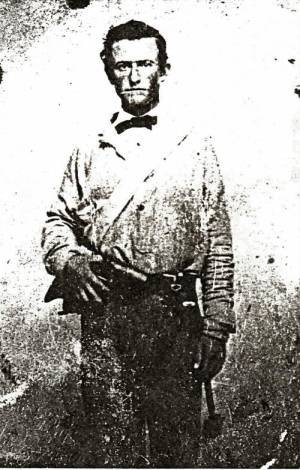 ]
After his brother, James ( 26th Arkansas Infantry, Co. B), was killed in the Battle of Prairie Grove in Arkansas (fought on December 7, 1862), Robert Manning Rodgers (a Noxubee County, MS native) joined the same regiment and company. Robert Manning Rodgers fought in the Battle of Pleasant Hill and in the Battle of Jenkin's Ferry. At Jenkin's Ferry he was wounded and had left arm amputated after remaining on the battlefield for 3 days. He was then taken to Tulip (Dallas County) Arkansas to recover. He survived to eventually settle in Grant County, Arkansas, where he was elected County Treasurer in the 1890s, and established a Normal School for teachers. He then served as County School Superintendent.
]
After his brother, James ( 26th Arkansas Infantry, Co. B), was killed in the Battle of Prairie Grove in Arkansas (fought on December 7, 1862), Robert Manning Rodgers (a Noxubee County, MS native) joined the same regiment and company. Robert Manning Rodgers fought in the Battle of Pleasant Hill and in the Battle of Jenkin's Ferry. At Jenkin's Ferry he was wounded and had left arm amputated after remaining on the battlefield for 3 days. He was then taken to Tulip (Dallas County) Arkansas to recover. He survived to eventually settle in Grant County, Arkansas, where he was elected County Treasurer in the 1890s, and established a Normal School for teachers. He then served as County School Superintendent.
Robert Manning Rodgers may be best known for his autobiography, which contains accounts of Battle of the Pleasant Hill and the Battle of Jenkin's Ferry; Pages 6-13. Excerpt from Robert Manning Rodgers Autobiography. Pages 6-13.
Battle of Jenkin's Ferry featured in Movie
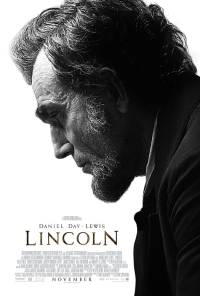 The Battle of Jenkin's Ferry was (inaccurately) featured as the opening scene of Steven Spielberg's 2012 movie, “Lincoln”.
The Battle of Jenkin's Ferry was (inaccurately) featured as the opening scene of Steven Spielberg's 2012 movie, “Lincoln”.
Aftermath & Legacy
Grave site of Brig. Gen. Horace Randal, at the “Old Marshall Cemetery” in Marshall, TX. A State marker was erected at his grave site in 1962.
Nannie E. Taylor Randal re-marries
After the death of Brig. Gen. Horace Randal, his widow, Nannie E. Taylor married Capt. T.M.K. Smith. She died in 1880 (at age 34) in Cantonment (a post from 1879-1881, in what is now, Blaine County, Oklahoma) on the North Fork of the Canadian River”. 113)
Randall County, Texas
[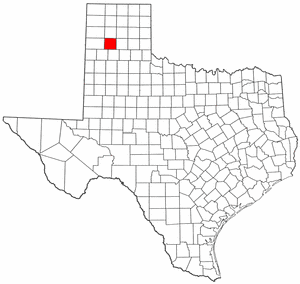 ]
Randall County was separated from Bexar County in 1876 and named in honor of Brigadier General Horace Randal. However, while the bill introduced into the Texas Legislature clearly indicated its intent to honor Brigadier General Horace Randal, the bill misspelled his surname by adding an extra “L” (a clerical error). A picture of Horace Randal and his 1st wife, Julia S. Bassett (shown above) hangs in the Randall County courthouse.
]
Randall County was separated from Bexar County in 1876 and named in honor of Brigadier General Horace Randal. However, while the bill introduced into the Texas Legislature clearly indicated its intent to honor Brigadier General Horace Randal, the bill misspelled his surname by adding an extra “L” (a clerical error). A picture of Horace Randal and his 1st wife, Julia S. Bassett (shown above) hangs in the Randall County courthouse.
USS Randall
Named for Randall County, Texas, the U.S.S. Randall (APA-224), built under Maritime Commission contract (MCV hull 572), was laid down 15 September 1944 by the Permanente Metals Corp., Yard No. 2, Richmond, California, launched 15 November 1944, sponsored by Mrs. Donald D. Dick, and acquired by the United States Navy and commissioned 16 December 1944. Capt. Harold R. Stevens in command.114)115)
The U.S.S. Randall (APA-224) was a Haskell-class attack transport, which was an amphibious assault ships of the United States Navy created in 1944. These ships were designed to transport 1,500 troops and their combat equipment, and land them on hostile shores with the ships' integral landing craft.116)
Following shakedown and training off the California coast, the U.S.S. Randall departed San Diego February 9, 1945, for Pearl Harbor, whence, after further training; she sailed on March 2, 1945 via Eniwetok for the Volcano Islands. Arriving at Iwo Jima on March 25, 1945, she discharged Army passengers and cargo and embarked marines for transportation to Guam. On April 20, 1945, she returned to Pearl Harbor, thence carried drummed petroleum products to Kwajalein where she took on Navy and Marine personnel for return to the United States. V-E Day (Victory in Europe) occurred on May 8, 1945. Arriving at San Francisco June 18, 1945, she sailed on July 9, 1945 for Ulithi, embarked Army units, then continued on to Okinawa, arriving August 12, 1945.117) On August 14, 1945, it was announced that Japan had surrendered unconditionally to the Allies, effectively ending World War II.
The most well-known person to have served on the U.S.S. Randall was the comedian, “Soupy Sales” during World War II. “Soupy Sales” entertained his shipmates with zany vignettes featuring “White Fang, the meanest dog that ever lived”.118)
With the end of World War II, the U.S.S. Randall was assigned duty and on September 5, 1945 got underway for Korea with units of the 7th Army Division. Returning to Okinawa, she carried marines to Taku, September 26-30, 1945, then, after a run to the Philippines, sailed again for the China coast. Between October 22 and November 23, 1945, she ferried Chinese troops between Kowloon to Chinwangtao and Tsingtao and on November 29, 1945 departed the Far East on her first “Magic Carpet” run, carrying Army Air Corps units from Okinawa to Seattle.119)
Departed from “Magic Carpet” duty in August 1946, Randall was employed in the Pacific Fleet’s amphibious training program from September until December 1946 when she returned to the east coast, underwent overhaul, and was briefly immobilized at New York. She then steamed to Norfolk, arriving April 24, 1947. Assigned again to amphibious training duties, she operated along the southeastern seaboard until August 1948 when she steamed north for operations of the Virginia and Carolina coasts.120)
In February 1949 she again departed the eastern seaboard, this time for Caribbean operations, and during the fall steamed back into the Pacific for exercises as far west as Hawaii, returning to Norfolk and resuming training exercises with naval reservists and marines December 1, 1949.121)
For the next 5 years she continued such training operations along the east coast, in the Caribbean, and twice, March – July 1951 and May – October 1954, in the Mediterranean. She had a total of three Captains – Nicholas Frank, Henry Sturr and Christopher Brackstone, all Naval Academy graduates. In 1954 she received the “E” award for her class.122)
At the end of 1955 Randall was ordered inactivated and on 25 January 1956 she arrived at Orange, Texas to join the Atlantic Reserve Fleet. Decommissioned 6 April 1956, she remained in reserve at Orange.123)
[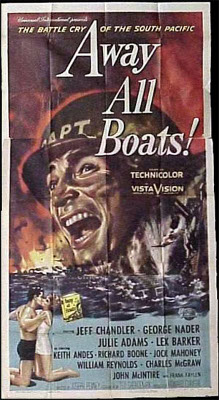 ][
][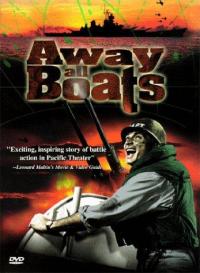 ]
In 1956, the U.S.S. Randall was used in the filming of “Away All Boats”, mainly around St. Thomas in the US Virgin Islands and Vieques Island, Puerto Rico. However, the movie was filmed aboard the U.S.S. Sanborn. The movie (released on August 16, 1956) told the story of a U.S. naval ship and its crew in the Pacific, 1943-1945.124)125)126)
]
In 1956, the U.S.S. Randall was used in the filming of “Away All Boats”, mainly around St. Thomas in the US Virgin Islands and Vieques Island, Puerto Rico. However, the movie was filmed aboard the U.S.S. Sanborn. The movie (released on August 16, 1956) told the story of a U.S. naval ship and its crew in the Pacific, 1943-1945.124)125)126)
The U.S.S. Randall was then transferred to the Maritime Administration’s National Defense Reserve Fleet at Mobil in February 1960. Her name was struck from the Navy list 1 July 1960. She was berthed at Mobil until sold in 1971 for scrap at Wilmington, Delaware.127)128)
Sources: Johansson, M. Jane. - PECULIAR HONOR: A HISTORY OF THE 28TH TEXAS CAVALRY, 1862-1865. Fayetteville: University of Arkansas Press, 1998. (http://www.rootsweb.ancestry.com/~txhousto/military/twentyeighth_texas_cavalry.htm)
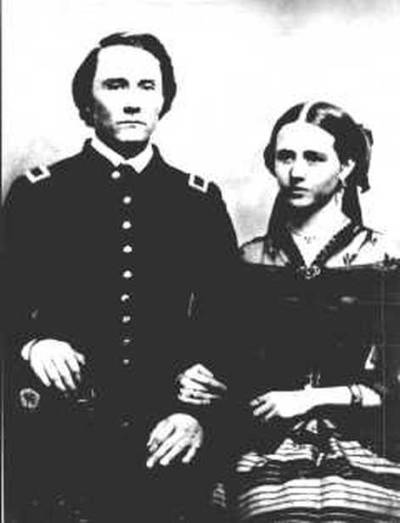
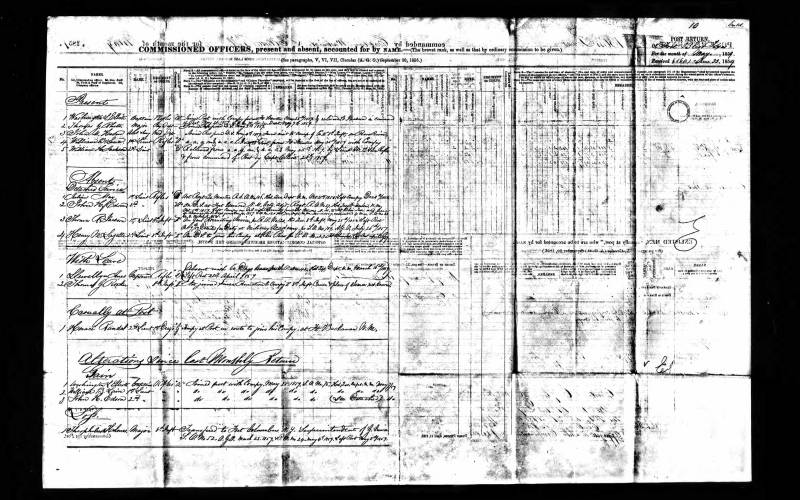
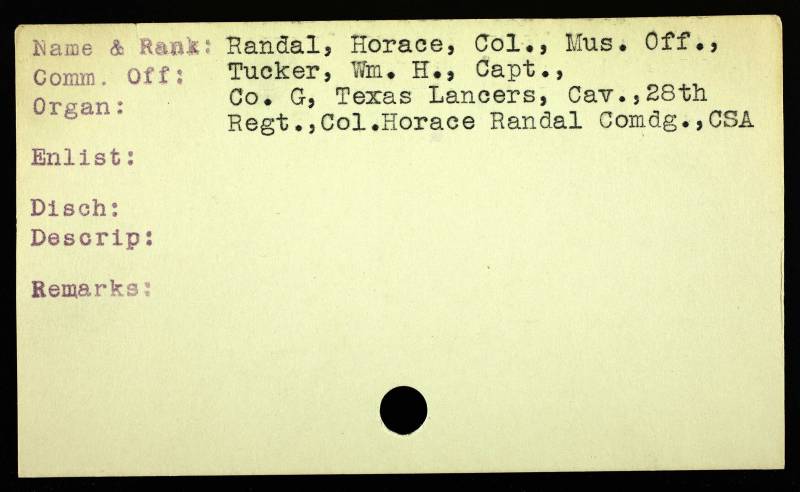
!["The Campaigns of Walker's Texas Division" by J. P. Blessington (a Private who was in Walker's Division). Published 1875. This book is available for download from [[https://archive.org/details/campaignsofwalke00bles|The Internet Archive.]] "The Campaigns of Walker's Texas Division" by J. P. Blessington (a Private who was in Walker's Division). Published 1875. This book is available for download from [[https://archive.org/details/campaignsofwalke00bles|The Internet Archive.]]](/lib/exe/fetch.php?media=horace_randal:the_campaigns_of_walkers_texas_division.jpg)
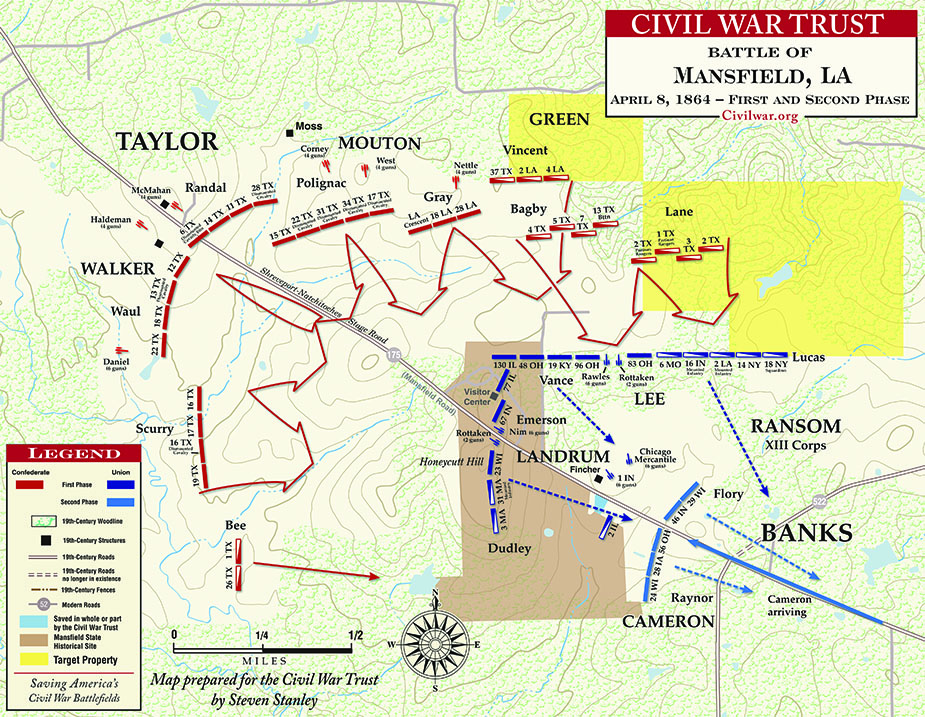
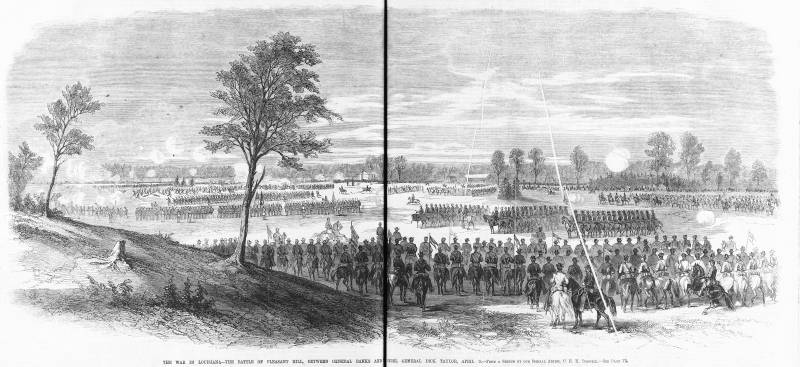
![Map depicting the opening positions of forces at Jenkins Ferry. [[http://www.civilwaralbum.com/misc/jenkinsferrymap2.htm|source]] Map depicting the opening positions of forces at Jenkins Ferry. [[http://www.civilwaralbum.com/misc/jenkinsferrymap2.htm|source]]](/lib/exe/fetch.php?media=horace_randal:jenkinsferrymap2.jpg)
![Map depicting the attack and final positions of forces at Jenkins Ferry. [[http://www.civilwaralbum.com/misc/jenkinsferrymap3.htm|source]] Map depicting the attack and final positions of forces at Jenkins Ferry. [[http://www.civilwaralbum.com/misc/jenkinsferrymap3.htm|source]]](/lib/exe/fetch.php?media=horace_randal:jenkinsferrymap3.jpg)
![Map depicting the sequence of battle at Jenkins Ferry. [[http://www.civilwaralbum.com/misc/jenkinsferrymap1.htm|source]] Map depicting the sequence of battle at Jenkins Ferry. [[http://www.civilwaralbum.com/misc/jenkinsferrymap1.htm|source]]](/lib/exe/fetch.php?media=horace_randal:jenkinsferrymap1.jpg)

